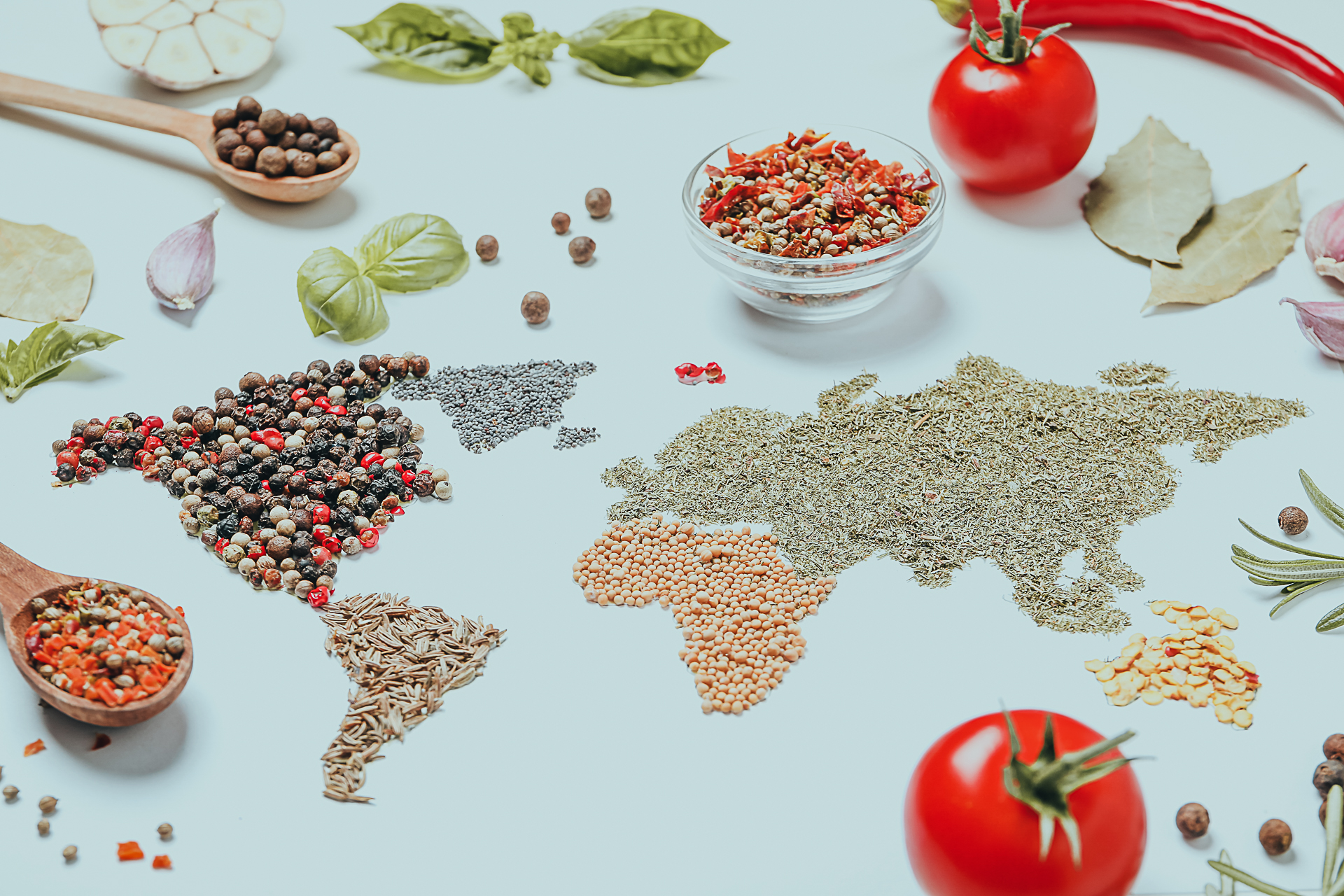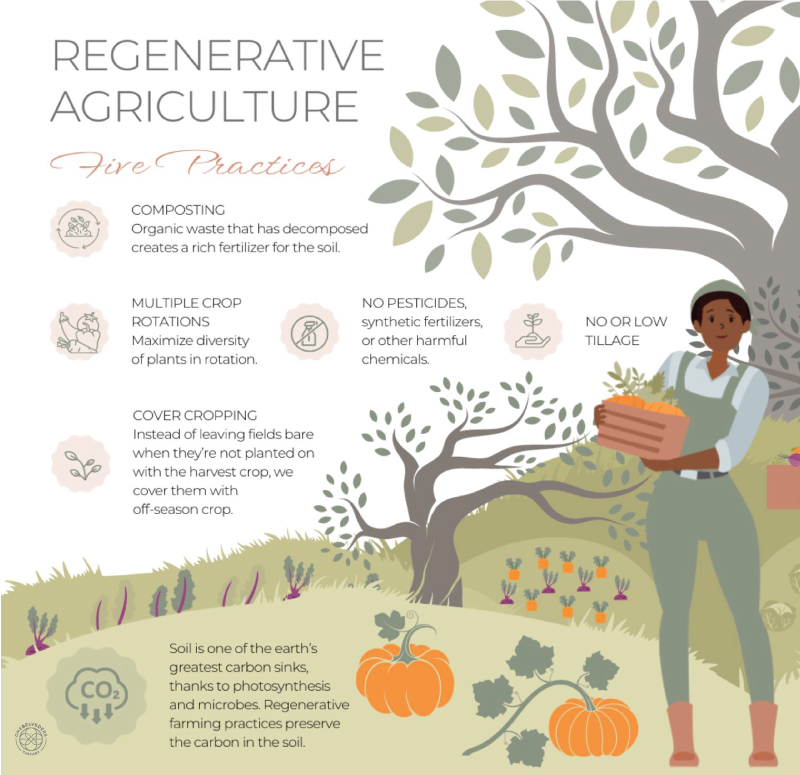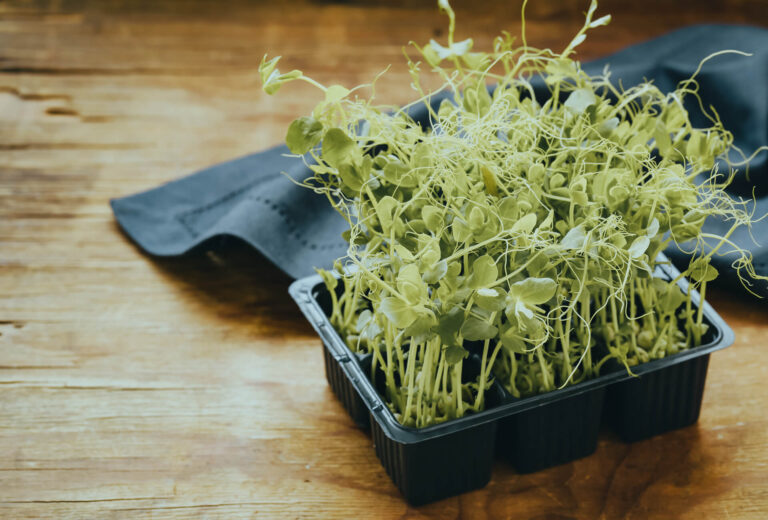Unveiling regenerative agriculture: farming for a better tomorrow
- Our Sustainable Farm (OSF)
A new era of agricultural transformation has begun. While the green revolution was successful in feeding the world’s rapidly growing population, it also depleted the soil, reduced biodiversity, and hastened climate change. We cannot sustain our present extraction-based agricultural practices, so we must transform agriculture by implementing a suite of regenerative practices. Regenerative agriculture aims to keep producing food, fiber, and energy while trying to minimize environmental damage.

What exactly is regenerative agriculture?
The definition of regenerative agriculture is changing in a variety of ways because of time, practices, research, and new information. Regenerative agriculture is a holistic approach to agriculture that emphasizes the interaction of farming systems with ecological systems. The concept of “regenerative agriculture” is not new. Before industrial agriculture, indigenous communities used it for centuries. A regenerative agriculture method conserves water while preventing land degradation and deforestation.
Regenerative Agriculture's Objectives
- Produce enough nutritious food to feed everyone on the planet.
- Reduce greenhouse gas emissions and store carbon in the soil to aid in climate change mitigation.
- Restore threatened biodiversity by improving natural habitats.
- Increase farmland productivity to prevent further deforestation and grassland conversion.
- Improve farmers’ living conditions.
Regenerative Agriculture Principles
All regenerative farms, regardless of type, adhere to the following principles:
To keep the soil covered with plants and natural materials, regenerative farming practices emphasize mulching, cover crops, and pastures rather than tilling.
Building healthy soils that retain excess water and nutrients necessitates a diverse approach. Farmers can earn extra money from it, and other wildlife and pollinators benefit as well.
Soil disturbances are reduced chemically, physically, and biologically when regenerative agriculture practices such as no-till or limited tilling are used.
The addition of livestock manure to the soil can improve its fertility, reduce fertilizer use, and increase soil organic matter. Healthy soils have been shown to store large amounts of carbon and water while reducing pollution runoff into the atmosphere.
Fields with living roots in the soil will never be bare. Farming practices such as planting cover crops in the winter or permanently pasturing the land are examples. The presence of living roots in the soil stabilizes the soil, ensuring the retention of excess water and nutrients.

Will Regenerative Agriculture Be Able to Feed the World's Population?
Modern agriculture has produced an incredible amount of food to feed the world’s 7.9 billion people. The global population is expected to reach 9.7 billion by 2050, posing a variety of agricultural challenges such as degraded land, unprecedented weather extremes, new pests and diseases, and diminishing water supplies.


Regenerative Agriculture Can Improve Food Quality and Quantity
When regenerative farming practices are implemented, farm yields may not always increase. Farmers may need time to adjust, as with any major change. Increasing soil organic matter through regenerative practices, according to research, can improve yields. Organic matter accumulates in the soil because of regenerative farming practices, allowing it to retain water and nutrients more efficiently. Drought-resistant soil allows crops to survive for longer periods of time.
Techniques for Regenerative Agriculture
Some of the techniques used by regenerative farmers are listed on the right.
Animals should be moved to different grazing sites on a regular basis to reduce soil erosion, feed costs, and manure buildup from concentrated animal agriculture.
Managing the soil’s chemical, biological, and physical properties.
Crop rotation allows farmers to interrupt pest reproductive cycles, reducing the need for pesticides and additional fertilizer. Above-ground plant life diversity leads to below-ground soil microbial community diversity, which is necessary for healthy soils.
Physical soil disturbances are reduced with these farming techniques, which Improve soil water retention, nutrient cycling, and topsoil retention.
Cover crops can improve soil quality, prevent soil erosion, and reduce weed development. Planting a diverse range of species can aid in soil health.

The Advantages of Regenerative Agriculture
Regenerative agriculture has the potential to transform farming into a climate change solution that benefits the earth, people, and all other life on the planet.

Biodiversity Enhancement for the Environment
Regenerative agriculture has two goals: restoring threatened biodiversity and improving natural ecosystems. Planting field strips, for example, creates habitat for a variety of wildlife, including birds, small mammals, and pollinators, allowing them to thrive. No-till techniques, for example, improve soil health by feeding subsurface microbes and diversifying the species that live beneath the surface.
Reducing deforestation
Regenerative agriculture techniques aid in the restoration of damaged lands by improving soil health. Higher yields from existing arable land may result, reducing the need for farms to grow and contributing to deforestation.
For Customers
By ensuring that there is enough healthy food for everyone, regenerative agriculture aims to improve consumer food security and health. A more resilient food system because of regenerative practices reduces the likelihood of empty shelves caused by climate impacts on food production. As the soil’s condition improves, the microorganisms that live there help plants gain access to minerals and produce phytochemicals that are linked to disease prevention and increased lifespan.

Summary
Regenerative agriculture is a comprehensive agricultural approach that emphasizes the interaction of farming systems with ecological systems. It saves water while preventing land degradation and deforestation, lowers greenhouse gas emissions, restores threatened biodiversity, boosts farmland productivity, and improves farmers’ living conditions. All regenerative farms adhere to the following principles: soil protection, increased plant diversity, reduced soil disturbance, the inclusion of farm animals, and the preservation of living roots in the soil. Although regenerative agriculture has the potential to feed the world’s population, it may not always result in higher yields. Growing crops in biologically active, healthy soil can improve food quality and quantity.


Grazing rotation, organic matter accumulation, drought-resistant soil, and biodiversity enhancement for the environment are all examples of regenerative agriculture techniques. It transforms agriculture into a climate change solution that benefits the earth, people, and all other forms of life on the planet. Regenerative agriculture has the potential to reduce deforestation while also improving soil health and consumer food security and health. No-till techniques feed subsurface microbes and diversify the species that live beneath the surface; crop rotation diversification reduces pest reproductive cycles; and no-till agriculture improves soil water retention, nutrient cycling, and topsoil retention. Cover crops can improve soil quality, prevent erosion, and inhibit weed growth.










